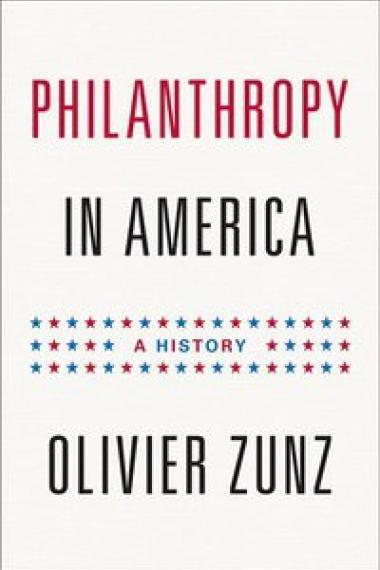Despite the sluggish economy, Americans gave a staggering $290 billion to charity in 2010. There is no shortage of causes clamoring for our attention—and our dollars. Philanthropic drives and organizations are woven into the fabric of American life. In Philanthropy in America, Olivier Zunz, a historian at the University of Virginia, has written a lucid and engaging story of how this came to be. He focuses on the 20th century, when Americans transformed their prolific, but mostly localized, efforts to form groups for addressing all manner of problems into philanthropy on a much larger scale, measured not only in the amount of money and numbers of people involved, but also in the scope of what such enterprises tried to achieve. American democracy has been “enlarged,” Zunz writes, by this “convergence of big-money philanthropy and mass giving.” The question is whether 21st-century philanthropy can withstand the growing chorus of criticism that has resulted.
One factor in this transformation was the rise of large American foundations in the early 20th century. Rich funders, such as John D. Rockefeller, and social reformers, such as education activist Abraham Flexner, formed alliances to address the root causes of impoverishment rather than give alms directly to the poor. The new allies gradually dismantled common-law doctrines that had limited donors to making gifts for narrow purposes, and during the Progressive Era, the great foundations—Rockefeller, Carnegie, Russell Sage—embarked on large-scale programs in fields ranging from scientific research to the rebuilding of the South.
At the same time, Americans’ old-fashioned idea of charity as alms for the poor evolved into the concept of philanthropy as a “search for the common good.” Zunz lays out the markers of this trend: the founding of community chests such as the United Way, the rise of professional fundraising, and the beginning of nationwide campaigns to amass money for the eradication of diseases such as tuberculosis.
Hovering over the great convergence was the question of the role government should play when donors claimed that they too could legitimately address public interests. As Zunz sees it, the presidency of Herbert Hoover gave one answer, when he asked private philanthropy to deliver social services to the unemployed during the deepening Depression, without much assistance from government. The New Deal offered another: Harry Hopkins, as head of the Federal Emergency Relief Administration, decided that if funds gathered through taxation were to be distributed to American citizens, government would do the job. In 1934, Congress seemed to decide the question of what relationship private philanthropy should have with government when it revised the federal tax code to stipulate that nonprofit organizations could “educate” but not “advocate.”
During the 1960s, some organizations, chiefly the Ford Foundation, found ways to circumvent what Zunz considers this unsatisfactory division of nonprofit activities, as well as to exert significant influence over urban and welfare policies. Their circumventions became national policy with the introduction of Lyndon B. Johnson’s Great Society: Government would now fund the provision of social services by private nonprofit organizations. Philanthropy was back in the public arena, “not as a subordinate but as an ally,” Zunz writes.
True, this was not the end of philanthropy’s troubles with government. It had to contend with both the growth of politically conservative groups, which insisted on an end to the alliance, and the increasing weight of government, whose influence was so pervasive that it threatened to overwhelm the philanthropic sector.
Out of this conflict, Zunz argues, a new synthesis has emerged. In Washington, conservative administrations’ support for financial aid for faith-based initiatives allowed religion, that quintessentially private force, back into the public arena, while legitimizing the idea of partnerships between private philanthropies and government. A series of Supreme Court decisions, meanwhile, has made it easier for nonprofits to venture into the realm of advocacy and exert influence on government. Today, Zunz says, the “only serious limitation that remains” on political activity by nonprofits is “their being barred from entering electoral contests,” and the Citizens United case of 2010, which removed limits on corporate spending to fund issue-oriented groups, may breach even that barrier.
But the synthesis Zunz describes is already showing cracks. The nonprofits that have allied themselves with government must now cope with the fact that the states are increasingly unable to pay their bills. As wealthy people and well-funded organizations increasingly dominate the private side of American philanthropy, critics on both right and left have decried its democratic pretensions and called for tighter controls. It may have looked for a time as if American philanthropy could combine its divergent traditions and coexist successfully with government, but it seems ever more likely that the moment has passed.

